How to Perform CPR is a crucial skill that can make a difference in saving lives. Understanding the key steps and techniques involved is essential for anyone to be prepared in emergency situations.
As we delve deeper into the intricacies of CPR, we uncover the importance of proper training, the nuances of different techniques, and how to navigate through various scenarios that may require CPR intervention.
Introduction to CPR
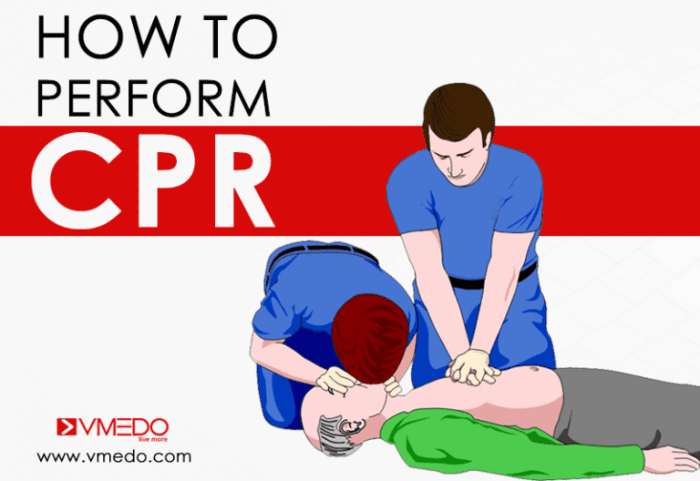
CPR, or Cardiopulmonary Resuscitation, is a vital emergency procedure that can save lives in critical situations where a person’s heart has stopped beating or they have stopped breathing. It involves a combination of chest compressions and rescue breaths to keep blood flowing and oxygen circulating throughout the body.
The basic concepts of CPR revolve around the idea of providing immediate intervention to maintain the vital functions of the body until further medical help arrives. By performing CPR correctly and promptly, bystanders can significantly increase the chances of survival for someone experiencing cardiac arrest.
Historical Background
The origins of CPR can be traced back to the 18th century when the technique of artificial respiration was first introduced. Over the years, advancements in medical science and emergency response have led to the development of modern CPR techniques that are widely taught and practiced today. The American Heart Association and other organizations have played a crucial role in standardizing CPR guidelines and training programs to ensure that individuals are equipped to respond effectively in emergency situations.
CPR Techniques
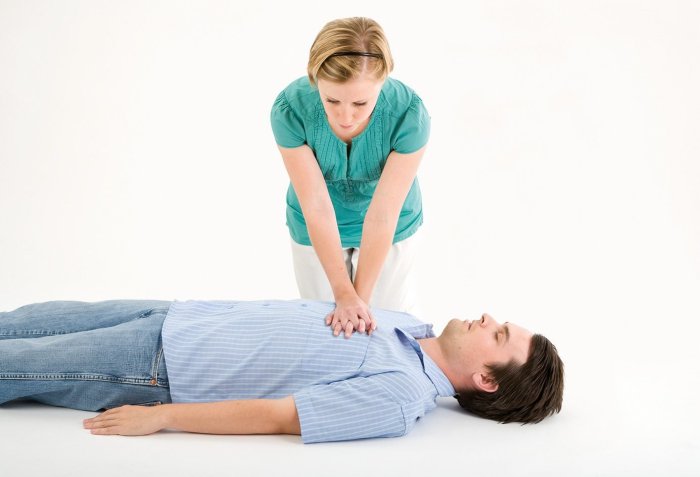
Performing CPR involves a series of steps that are crucial in providing life-saving assistance to someone experiencing cardiac arrest. Proper technique is essential to ensure the effectiveness of CPR.
Steps Involved in Performing CPR
- Check the scene for safety and ensure the person is unresponsive.
- Call for help or ask someone to call emergency services.
- Begin chest compressions by placing the heel of one hand on the center of the person’s chest.
- Interlock the fingers of both hands and position them directly over the first hand.
- Keep your arms straight and press down firmly on the chest at least 2 inches deep at a rate of 100-120 compressions per minute.
- After 30 compressions, give two rescue breaths by tilting the person’s head back, lifting the chin, and covering their mouth with yours.
- Watch for the person’s chest to rise with each breath.
- Continue with cycles of 30 compressions and 2 breaths until help arrives or the person shows signs of responsiveness.
Correct Hand Placement for Chest Compressions
Proper hand placement for chest compressions is crucial to ensure effective circulation of blood to vital organs.
Place the heel of one hand on the center of the person’s chest, between the nipples.
Interlock your fingers and position them directly over the first hand to provide enough force during compressions.
Proper Ratio of Chest Compressions to Rescue Breaths
The correct ratio of chest compressions to rescue breaths is essential for maintaining oxygen flow and circulation.
The standard ratio for CPR is 30 chest compressions followed by 2 rescue breaths.
This cycle should be repeated continuously until emergency medical help arrives or the person starts breathing on their own.
Training and Certification
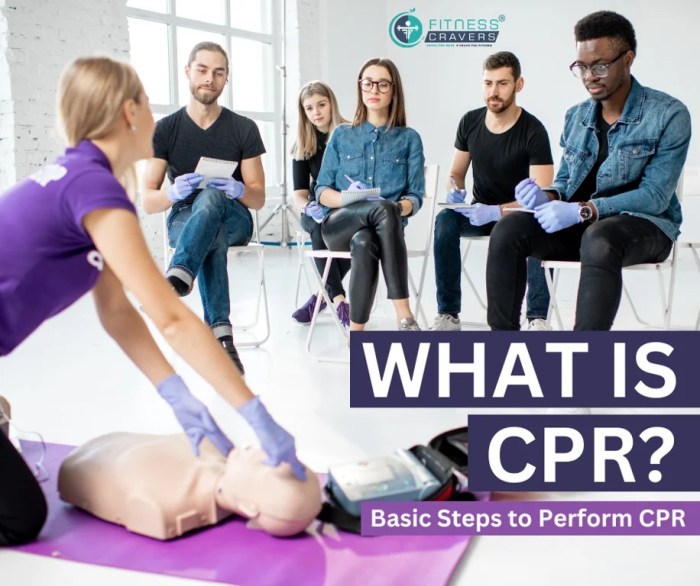
Getting certified in CPR is crucial as it ensures that individuals have the necessary skills and knowledge to respond effectively in emergency situations. CPR certification also provides confidence and reassurance to the rescuer and the victim.
Where to Receive CPR Training
- Local Hospitals: Many hospitals offer CPR training courses to the public.
- Community Centers: Community centers often host CPR classes conducted by certified instructors.
- Red Cross: The American Red Cross is a reputable organization that provides CPR training nationwide.
- Online Courses: There are online platforms that offer CPR certification courses for convenience.
Basic CPR vs. Advanced CPR Training, How to Perform CPR
- Basic CPR: Basic CPR training covers the fundamental techniques of chest compressions and rescue breaths for adult, child, and infant victims.
- Advanced CPR: Advanced CPR training includes additional skills such as the use of automated external defibrillators (AEDs), advanced airway management, and team dynamics in a resuscitation scenario.
Special Considerations
Performing CPR may require some special considerations depending on the age, physical condition, or specific circumstances of the individual in need. It is crucial to understand when to perform CPR on adults, children, and infants, as well as how to adapt the technique for pregnant women, obese individuals, or special situations like drowning or drug overdose.
Performing CPR on Different Age Groups
- Adults: CPR is typically performed on adults who have collapsed and are unresponsive. The compression depth for adults is around 2 inches at a rate of 100-120 compressions per minute.
- Children: CPR for children involves using a modified technique with one hand or two fingers for compressions. The depth of compressions is about 1/3 the depth of the chest.
- Infants: CPR for infants requires even gentler compressions and rescue breaths. The compression depth is about 1.5 inches, and the technique involves covering both the infant’s nose and mouth for breaths.
Modifications for Special Cases
- Pregnant Women: When performing CPR on a pregnant woman, the position of the hands for compressions may need to be slightly adjusted to avoid putting pressure on the abdomen.
- Obese Individuals: Compressions on obese individuals may require more force due to the additional tissue. It is important to ensure that compressions are deep enough to be effective.
Adapting CPR for Special Situations
- Drowning: CPR for drowning victims may involve clearing the airway of water before starting compressions. Chest compressions should be started promptly to maximize the chances of survival.
- Drug Overdose: In cases of drug overdose, where the individual may have stopped breathing, CPR should be initiated immediately. It is crucial to administer rescue breaths along with compressions to maintain oxygen supply.
Common Mistakes to Avoid: How To Perform CPR
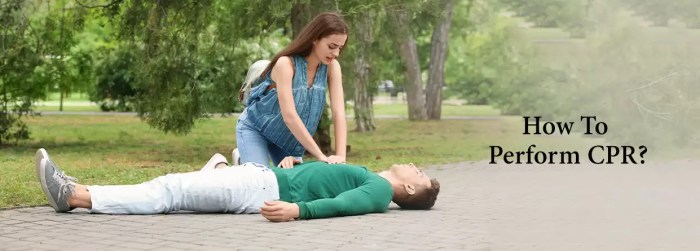
When performing CPR, it is crucial to be aware of common mistakes that can hinder the effectiveness of the life-saving technique. By understanding these errors, you can ensure that you are providing the best possible care in an emergency situation.
Incorrect Pace and Depth of Compressions
One of the most common mistakes during CPR is not maintaining the correct pace and depth of compressions. It is essential to press down at least 2 inches into the chest at a rate of 100 to 120 compressions per minute. This ensures that the heart is being effectively stimulated and increases the chances of survival.
Lack of Focus and Calmness
Another common mistake is losing focus and becoming overwhelmed during a CPR emergency. It is crucial to stay calm and composed, as panicking can lead to errors in technique and reduce the effectiveness of the rescue efforts. Remember to take deep breaths and focus on the task at hand to provide the best possible care to the victim.
Concluding Remarks
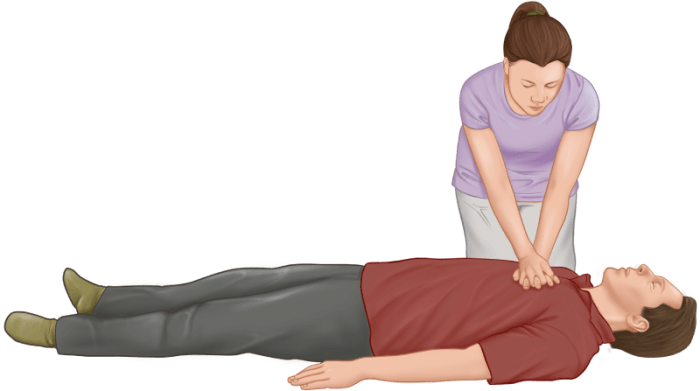
In conclusion, mastering the art of CPR can truly be the difference between life and death. By staying informed, trained, and prepared, you can be a valuable asset in times of crisis. Remember, every second counts when it comes to performing CPR.